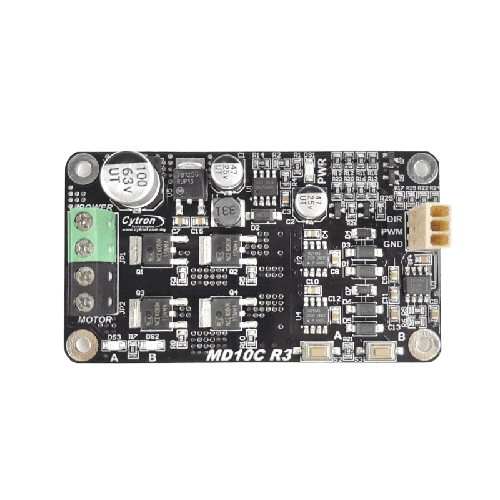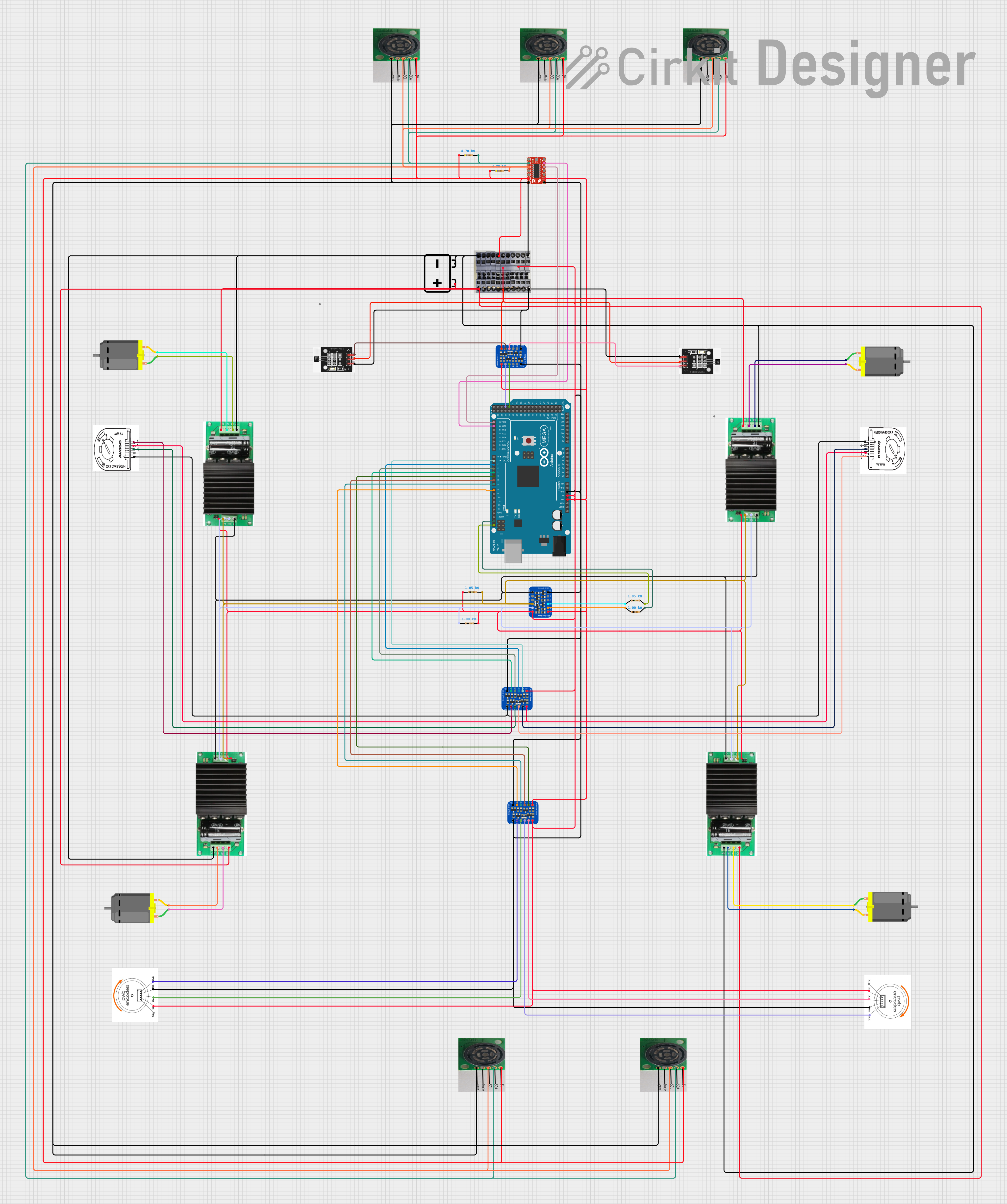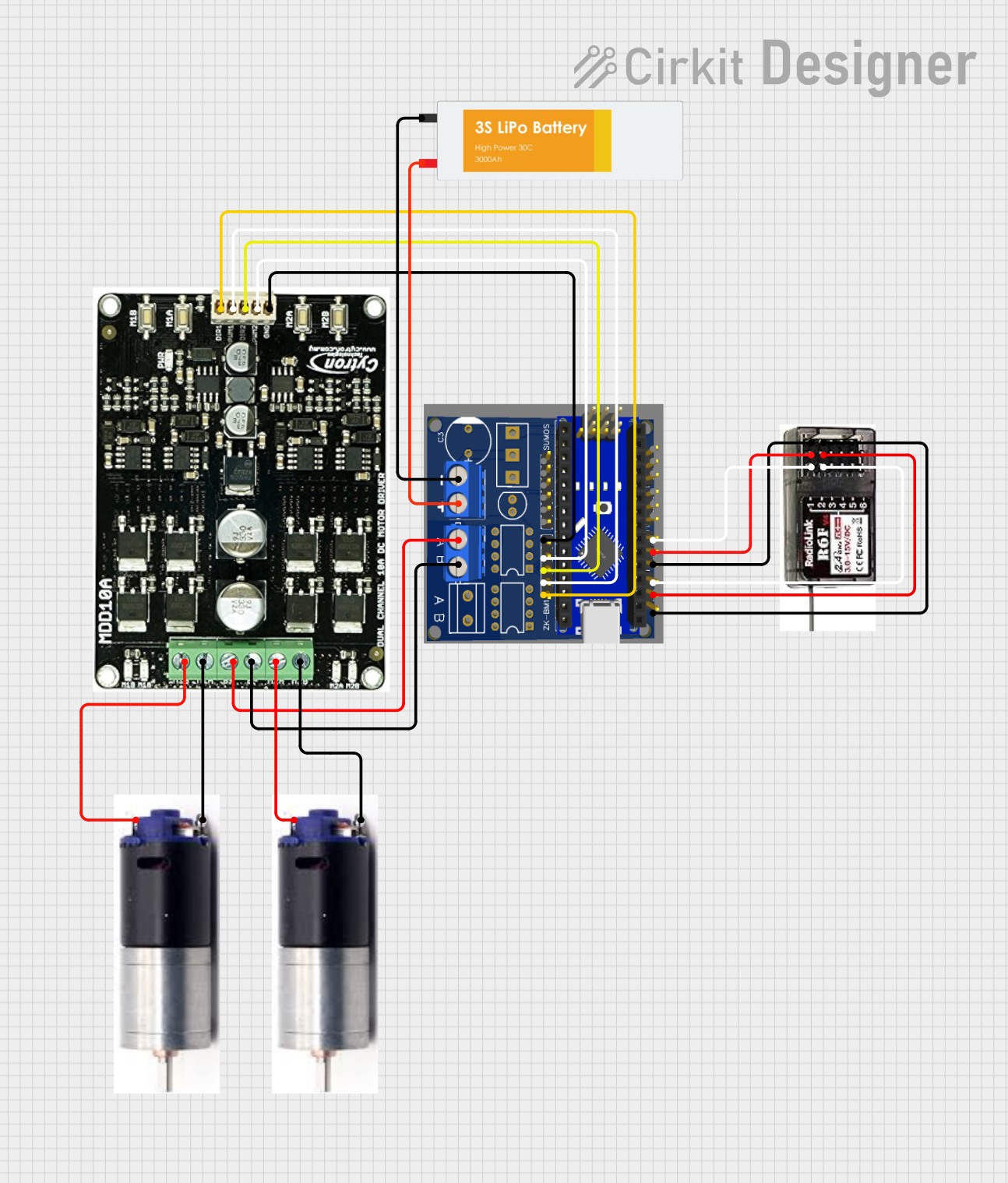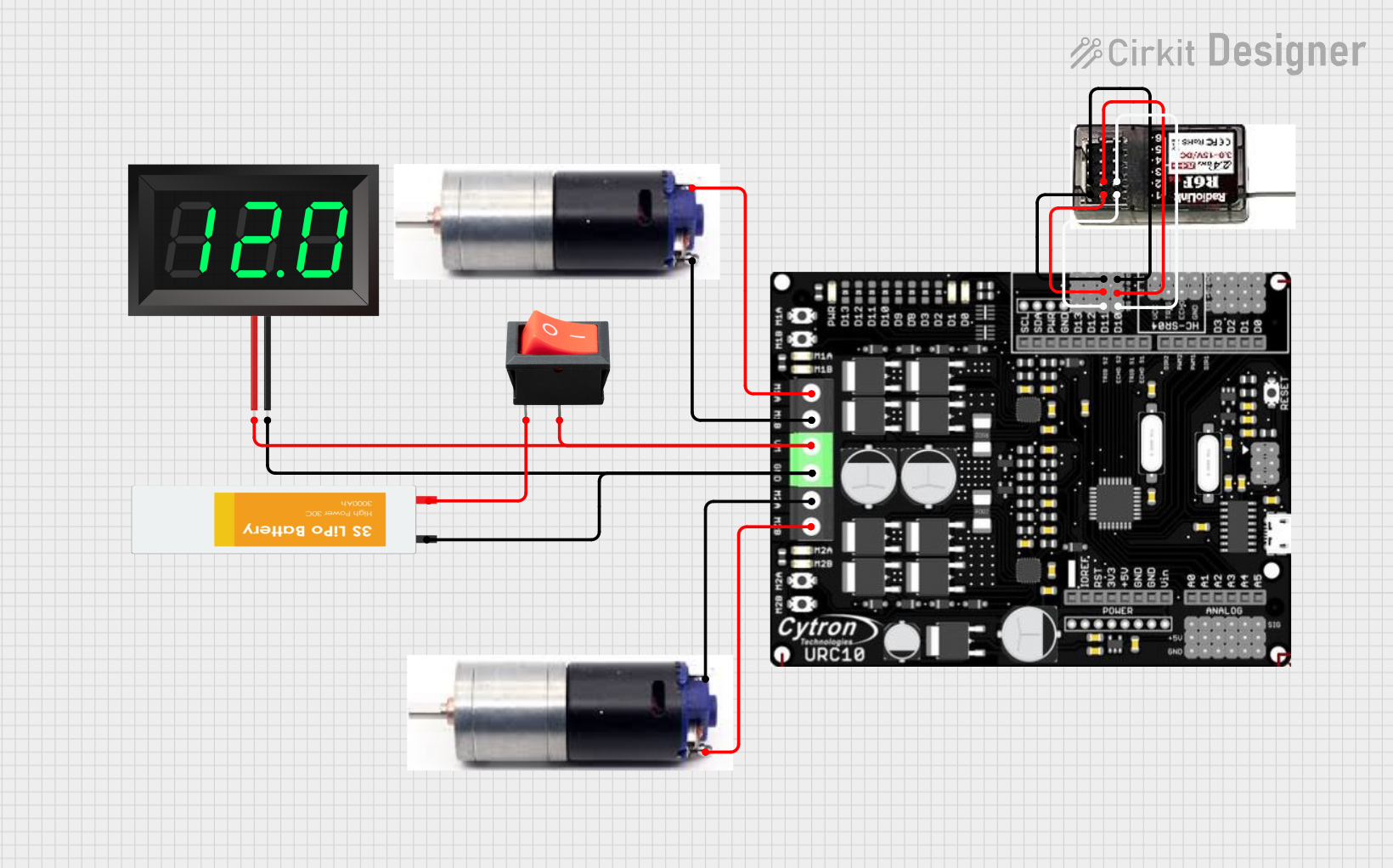
How to Use MD10C Motor Driver: Examples, Pinouts, and Specs

 Design with MD10C Motor Driver in Cirkit Designer
Design with MD10C Motor Driver in Cirkit DesignerIntroduction
The MD10C Motor Driver by Cytron is a compact and efficient driver designed to control DC motors. It supports bidirectional motor control and can handle high current loads of up to 13A continuously, making it ideal for applications in robotics, automation, and other motor-driven systems. The MD10C is compatible with a wide range of microcontrollers, including Arduino, Raspberry Pi, and other development boards, and features a simple interface for easy integration.
Explore Projects Built with MD10C Motor Driver

 Open Project in Cirkit Designer
Open Project in Cirkit Designer Open Project in Cirkit Designer
Open Project in Cirkit Designer
 Open Project in Cirkit Designer
Open Project in Cirkit Designer
 Open Project in Cirkit Designer
Open Project in Cirkit DesignerExplore Projects Built with MD10C Motor Driver

 Open Project in Cirkit Designer
Open Project in Cirkit Designer Open Project in Cirkit Designer
Open Project in Cirkit Designer
 Open Project in Cirkit Designer
Open Project in Cirkit Designer
 Open Project in Cirkit Designer
Open Project in Cirkit DesignerCommon Applications
- Robotics (e.g., controlling wheels or robotic arms)
- Conveyor belt systems
- Automated guided vehicles (AGVs)
- DIY motorized projects
- Industrial automation systems
Technical Specifications
The MD10C Motor Driver is designed to provide reliable and efficient motor control. Below are its key technical details:
General Specifications
| Parameter | Value |
|---|---|
| Manufacturer | Cytron |
| Part ID | MD10C |
| Motor Voltage Range | 5V to 30V |
| Continuous Current | 13A |
| Peak Current | 30A (for 10 seconds) |
| Control Signal Voltage | 3.3V or 5V logic compatible |
| PWM Frequency | Up to 20 kHz |
| Dimensions | 84mm x 62mm x 25mm |
| Weight | 70g |
Pin Configuration and Descriptions
The MD10C Motor Driver has a simple pinout for easy interfacing. Below is the pin configuration:
| Pin Name | Type | Description |
|---|---|---|
| VM | Power | Motor power supply input (5V to 30V). |
| GND | Power | Ground connection for the motor power supply. |
| VCC | Power | Logic power supply (3.3V or 5V). |
| GND | Power | Ground connection for the logic power supply. |
| PWM | Input | Pulse Width Modulation (PWM) signal for speed control. |
| DIR | Input | Direction control signal (HIGH for forward, LOW for reverse). |
| MOTOR+ | Output | Positive terminal of the motor. |
| MOTOR- | Output | Negative terminal of the motor. |
Usage Instructions
The MD10C Motor Driver is straightforward to use in a circuit. Follow the steps below to integrate it into your project:
Connecting the MD10C
- Power Supply: Connect the motor power supply to the
VMpin and its ground to theGNDpin. Ensure the voltage is within the range of 5V to 30V. - Logic Power: Connect the logic power supply (3.3V or 5V) to the
VCCpin and its ground to theGNDpin. - Motor Connections: Connect the motor terminals to the
MOTOR+andMOTOR-pins. - Control Signals:
- Connect the
PWMpin to a PWM-capable pin on your microcontroller for speed control. - Connect the
DIRpin to a digital output pin on your microcontroller for direction control.
- Connect the
Example Arduino Code
Below is an example of how to control the MD10C Motor Driver using an Arduino UNO:
// Define pin connections
const int pwmPin = 9; // PWM pin connected to MD10C's PWM input
const int dirPin = 8; // Direction pin connected to MD10C's DIR input
void setup() {
// Set pin modes
pinMode(pwmPin, OUTPUT);
pinMode(dirPin, OUTPUT);
}
void loop() {
// Example: Rotate motor forward at 50% speed
digitalWrite(dirPin, HIGH); // Set direction to forward
analogWrite(pwmPin, 128); // Set PWM duty cycle to 50% (128/255)
delay(2000); // Run motor for 2 seconds
// Example: Rotate motor backward at 75% speed
digitalWrite(dirPin, LOW); // Set direction to reverse
analogWrite(pwmPin, 192); // Set PWM duty cycle to 75% (192/255)
delay(2000); // Run motor for 2 seconds
}
Important Considerations
- Ensure the motor power supply voltage matches the motor's rated voltage.
- Use appropriate heat dissipation methods (e.g., heatsinks) if operating at high currents for extended periods.
- Avoid reversing the polarity of the power supply or motor connections, as this may damage the driver.
- Use a fuse or circuit breaker to protect the motor and driver from overcurrent conditions.
Troubleshooting and FAQs
Common Issues and Solutions
Motor not spinning:
- Verify that the power supply is connected and providing the correct voltage.
- Check the
PWMandDIRsignals from the microcontroller. - Ensure the motor connections are secure and not reversed.
Motor spins in the wrong direction:
- Reverse the logic level on the
DIRpin or swap the motor connections (MOTOR+andMOTOR-).
- Reverse the logic level on the
Driver overheating:
- Ensure the current draw of the motor does not exceed the driver's continuous current rating (13A).
- Add a heatsink or active cooling if operating at high currents.
PWM signal not working:
- Confirm that the microcontroller's PWM pin is configured correctly.
- Check the PWM frequency; it should not exceed 20 kHz.
FAQs
Q: Can the MD10C control two motors simultaneously?
A: No, the MD10C is a single-channel motor driver and can control only one motor at a time.
Q: Is the MD10C compatible with 3.3V logic?
A: Yes, the MD10C supports both 3.3V and 5V logic levels for control signals.
Q: What happens if the motor draws more than 13A continuously?
A: The driver may overheat or shut down to protect itself. Use a motor with a current rating within the driver's limits.
Q: Can I use the MD10C with a stepper motor?
A: No, the MD10C is designed for DC motors and is not suitable for stepper motors.
By following this documentation, you can effectively integrate the MD10C Motor Driver into your projects and troubleshoot common issues.